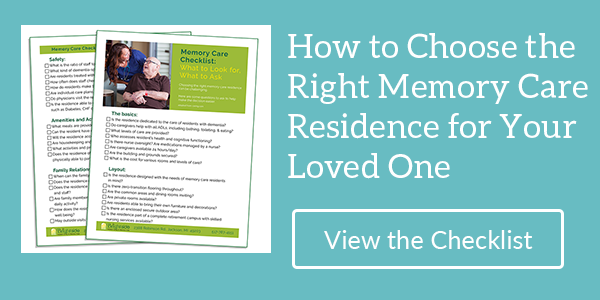If you’re worried about your aging parent operating their vehicle – or worse, finally taking those keys away – you’re not alone. Most adult children share these fears, and though they might be a point of contention with mom and dad, they’re simply a sign of concern from a well-meaning son or daughter who doesn’t want to see someone hurt.
But at what point do you stop worrying and start taking action?
And when that time does come, how do you approach the conversation and ease your parent out of the driver’s seat?
We can help. Below are some signs that it may be time to find alternative modes of transportation for your aging parent. Keep a watchful eye on your mom or dad in the coming months, and when you’re ready, use the tips at the bottom of this post for handling that touchy conversation.
Physical Signs
To be a safe driver, your parent needs to have full use of their faculties. They need to be able to hear horns honking, see traffic lights change and spot brake lights in the distance. They also need to have quick reflexes in order to react quickly to changing circumstances, and they should be flexible enough to turn their head, arms, neck and torso when necessary.
Some specific physical issues that can make it dangerous to drive include:
- Decreased vision, squinting or eye disorders like glaucoma
- Impaired hearing
- Slow reflexes
- Weakness or tingling in the hands, arms, legs or feet
- Pain or stiffness in the neck or back
Mental Signs
Cognitively, your loved one needs to be alert, able to multi-task and able to remember directions and rules of the road. Mental changes like the following could indicate it’s time to take away the keys:
- Slow reaction times
- Inability to stay awake
- Difficulty multi-tasking
- Problems with short-term memory
- Distractibility
Other Red Flags
You should also look at their actual driving habits and history to get a sense of how well they’re managing the task. Be on the lookout for dents, scrapes and chips on their vehicle, and watch for any damage to their mailbox, garage door, fence or driveway. These could indicate they’re not driving as well as they once were.
Every once in a while take a drive with them to assess their abilities. Do they make full stops at red lights and stop signs? Do they remember to use their blinker when turning or changing lanes? Do they turn on their lights when it’s foggy or rainy? Do they still buckle their seatbelt? If they’ve become lax in adhering to the rules of the road, it may be time to make a change.
You should also monitor how driving affects them. Are they worried, stressed out or scared? Do they get lost and confused easily? Do they seem mentally exhausted or tired once they’re done with the trip? Do they get angry at other drivers or pedestrians? If you spot anything worrisome, check back again in a week or two to see if the issues persist. If it wasn’t just a one-time thing, consider taking action.
Talk to your parent’s friends and neighbors to get an idea of how they drive when you’re not around, too, and check with their insurance agency to see if they’ve had any recent tickets or citations. These are all red flags that shouldn’t be ignored.
Taking Away the Keys
Once you determine it’s time for your aging mother or father to stop driving, you’ll want to start the conversation as soon as possible. Most parents put up a fight when it comes to losing their driving privileges, and it may be a point of contention for some time. You’ll want to start the process as early as possible to ensure they’re not a danger to themselves or other drivers on the road.
First, sit down and have a respectful conversation. Discuss your fears and worries, and talk about why you think it’s time to relinquish the car and start seeking other modes of transportation. They may fight you at first but keep at it. Bring it up weekly, and continue to drive home your concern for their safety as well as others on the road – including children, families, etc.
Next, talk with their doctor. Their doctor may be able to provide you with cold, hard evidence that they’re unfit to drive. Maybe they’re taking a medication that impairs their abilities or they’ve recently undergone a vision test that showed worrisome results. Present these items to your parent, and with their doctor’s recommendation on your side, they may be more willing to give up their keys.
It’s not the ideal route, but you could also report your parent to the Department of Motor Vehicles in your state. Many DMVs will take reports of unsafe drivers and either take their license or require them to come in for a new driving test. Either way, it gets your parent off the road in a hands-off, anonymous way.
You could also have a friend or family “borrow” the car or “take it in for repairs.” If your loved one is dealing with memory issues, they may begin to forget about the vehicle altogether. If not, just remind them that their friend is using the car for very important reasons, and assure them that you’ll arrange a ride should they need one.
Set up alternative transportation options to make the transition easiest on your parent. Create a schedule of family and friends who can provide rides, or utilize Uber, taxis, public transport or a private car service to get your loved one where they need to go. Relinquishing driving will be a lot easier if they know they’re not missing out on the world around them.
Consider an assisted living facility. If your parent’s driving abilities are hindered, chances are they deal other limiting physical and mental factors in their daily lives as well. It may be time to consider moving them to an assisted living facility where they can get daily care, socialization and mental stimulation to keep them healthy and well for the long-term. Stop by Ganton’s today to see the safe, secure living conditions we can offer your loved one.
For information about Countryside, call Margaret Nagel at (517) 206-5000 or download our brochure to learn about our care levels, cost, and amenities.


